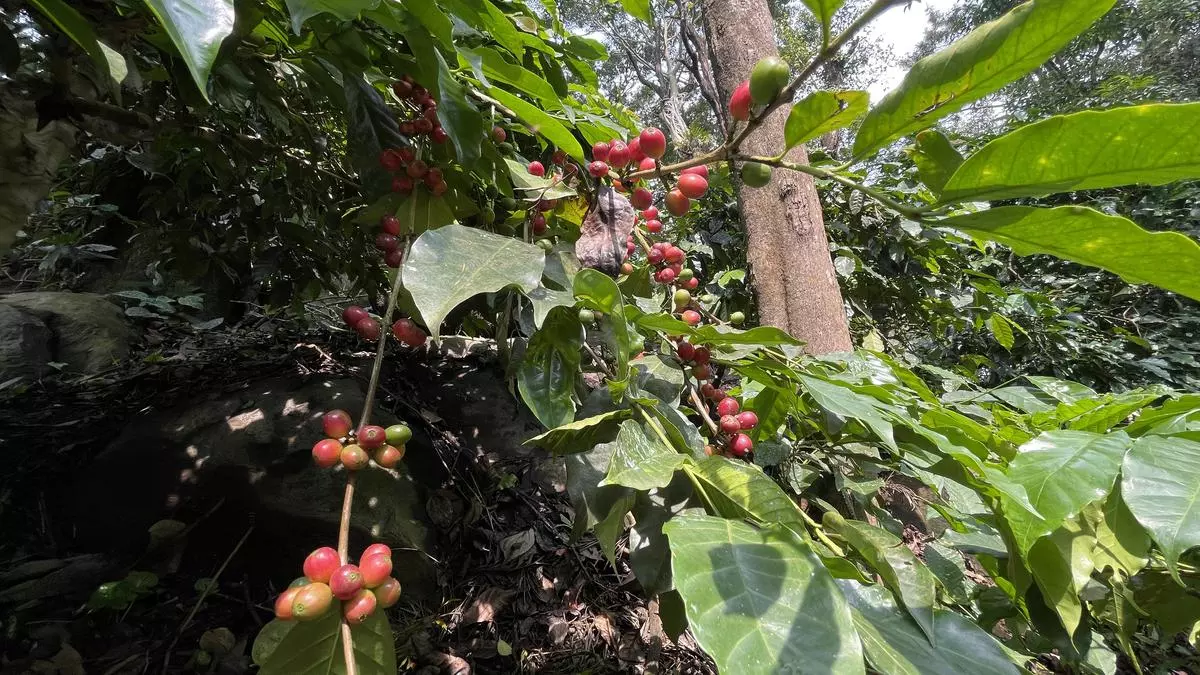Exporters see drop in coffee crop; order books look slim
Coffee exporters see the domestic crop for 2023-24 starting October to be marginally lower than last year with erratic weather seen impacting the output of arabica coffee.
“We expect the arabica production to be around 80,000 tonnes and robusta at about 2.7 lakh tonnes,” said Ramesh Rajah, President, The Coffee Exporters Association of India.
Per the Coffee Board’s final estimates for the previous year 2022-23, the production of arabicas stood at 1 lakh tonnes (lt) and robustas at 2.52 lt totalling 3.52 lt.
For the current year 2023-24, the Board, in its initial post blossom estimates, has projected an output of 3.74 lt comprising arabica of about 1.13 lt and 2.61 lt of robustas. The Board’s projections may see a downward revision going forward as the erratic weather – untimely and uneven rains coupled with prolonged dry spell during the peak monsoon season this year — is seen impacting the output.
Weather impact
Hit by the weather vagaries, growers in Karnataka, which produces over 70 per cent of the country’s coffee output, see a lower crop this year. “The erratic weather and rainfall patterns have a huge impact on plantation crop yields and quality,” Mahesh Shasidhar, former chairman of Karnataka Planters Association (KPA), said recently. He expects the 2023-24 output to be lower by about 5-10 per cent over the previous year’s final estimates of the Coffee Board.
However, Ajoy Thipaiah, Chairman of Upasi Coffee Committee, said the crop may be lower by 25-30 per cent over the Coffee Board’s initial estimate of 3.74 lt, based on the prevailing crop conditions and weather.
Most growers say a clearer trend on output would emerge as the ongoing harvest of arabicas, which has been advanced by over a month due to early blossom showers, makes progress. The picking of early ripened arabicas has started in Karnataka but the current spell of rain is seen affecting the quality as the ripened fruits are splitting on the plant under the rain impact.
Exports down 6.5%
Rajah said the outlook for exports is not bullish as the current order books are looking slim as buyers are going slow due to the prevailing economic conditions in consuming countries and also due to the concerns over the proposed regulations on imports of deforestation free products in the European Union.
“Our order books are about 5 per cent lower than the last year. In fact, last year’s order books around this time were about 30 per cent lower than the historic normal,” Rajah added. The shipments of new arabicas, which are currently being harvested, are likely to begin by the end of December.
Shipments in the current financial year (April 1-November 13) are down by about 6.5 per cent at 2.31 lt in volumes over same period last year’s 2.47 lt. However, in value terms, the exports are up by close to 6 per cent at $734 million for the period over same period last year’s $694 million.
